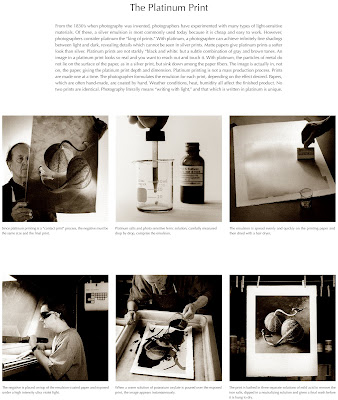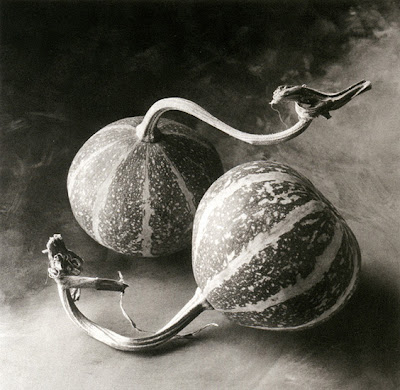Do Process: Cy DeCosse
This week I am featuring artists exhibiting in Verve Gallery’s Do Process exhibition, showcasing eight unique approaches to the photographic process.
Cy DeCosse’s website relects a myriad of historical processes, but at the Verve Gallery, he is exhibiting still life platinum palladium and gum dichromate prints. In 2001, Cy, with Keith Taylor as printer, began the revival of the gum dichromate technique. In 1858, John Pouncy, in England, made the first color gum dichromate images. This process is capable of rendering painterly images with broad tones and little resolution of detail from photographic negatives using light sensitive dichromates and color pigments. Traditionally, this is a multi-layered printing process that makes full-color images; however, the prints can also be made from any one single color.
Cy’s work is in numerous public collections including the England Royal Trust and the Minneapolis Institute of the Arts. His work has been exhibited widely in the U.S. and abroad. There are four books containing Cy’s work. The first is a limited edition book published by The Journal of Contemporary Photography: Volume IV, entitled: Gardens of DeCosse (2000). The book is devoted exclusively to the work of the artist. The images in the book range from the quiet morning’s light falling on freshly picked vegetables to the riotous energy of flowers in full bloom. The second is a catalog for an exhibition held at the Accademia Delle Arti Del Disegno Firenze, Italy in October, 2001, entitled: Cy DeCosse: Play of the Light (2001). His third book is entitled Flowers and Food (2009) and it contains DeCosse’s botanical photographs in Gum Dichromate & Platinum. Florence by Cy DeCosse (2009) is a book of portraits that Cy dedicates to his muse, the city of Florence and its people.
Photographers began experimenting with Platinum in Germany in the 1830s. With a platinum print,the light sensitive Platinum emulsion that makes the image is actually imbedded, soaked into the paper, not on the paper’s surface, as is the case with gelatin silver prints. The imbedded Platinum inks give the platinum print a sensation of depth and dimension. Platinum printing is a unique, handmade process. The photographer formulates the emulsion of Platinum and Palladium for each print so as to produce the desired effect—a brown black, a rich warmer effect than the black blacks in a silver gelatin print. Papers, often hand-made, are coated with the Platinum emulsion by hand. Weather conditions, heat, humidity all affect the finished product. Thus, no two Platinum Palladium prints are ever identical.
Posts on Lenscratch may not be reproduced without the permission of the Lenscratch staff and the photographer.
Recommended
-
Ragne Kristine Sigmond: Portraits of Painterly LightDecember 2nd, 2025
-
Mary Pat Reeve: Illuminating the NightDecember 1st, 2025
-
Ricardo Miguel Hernández: When the memory turns to dust and Beyond PainNovember 28th, 2025
-
Pamela Landau Connolly: Columbus DriveNovember 26th, 2025
-
MATERNAL LEGACIES: OUR MOTHERS OURSELVES EXHIBITIONNovember 20th, 2025





































































